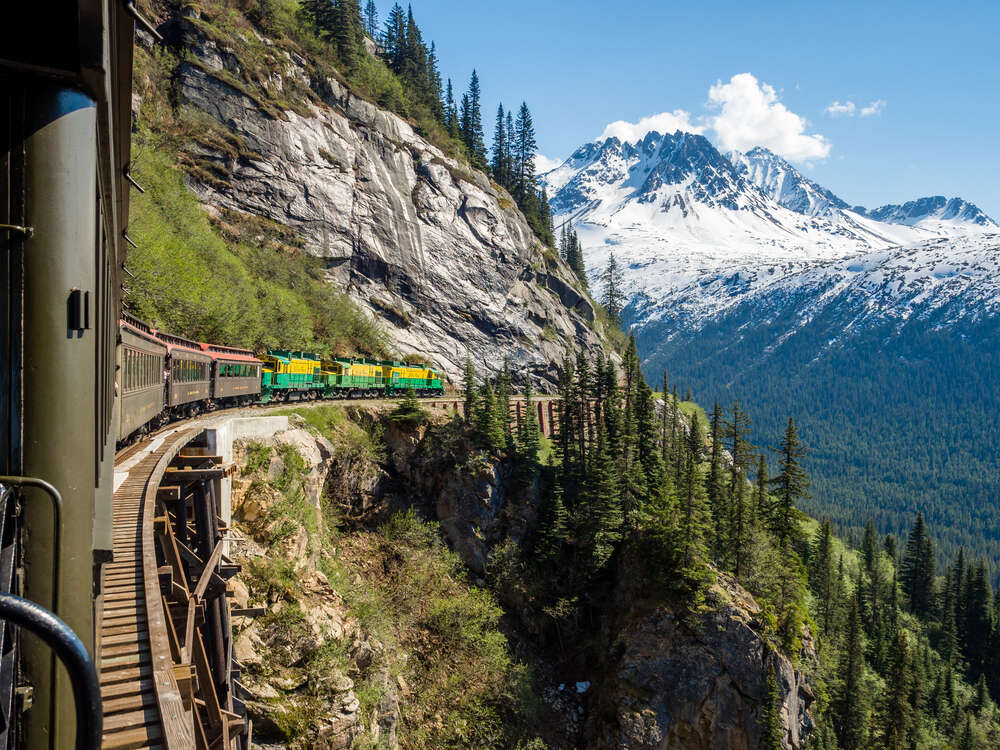
What are the auto pool rules in Alaska?
Content
Parking lanes are common on Alaska's freeways and are of great help to drivers in a variety of ways. While driving in Alaska may be better known for its scenic rural roads, most Alaskans have to worry about commuting on the highway every day. Car pool lanes are lanes reserved for vehicles with multiple passengers and solo drivers are not allowed on them. Even during peak hours, car lanes usually allow drivers to drive their vehicles at standard motorway speeds.
It's always important to follow the rules of the road, and if you do, you can benefit from Alaska's fleet lanes. These lanes encourage car sharing, which not only saves passengers time and gas money, but also keeps vehicles off the road. Fewer vehicles on the roads means less traffic, less carbon footprint, and less road damage (and therefore fewer road repairs seeping into taxpayers' wallets).
Using car pool lanes will surely cut down on your daily commute or even a no-ride commute that goes through a high traffic area. As with most traffic rules, fleet rules and regulations are easy to learn and follow, so you can benefit immediately.
Where are the car parking lanes?
Car pool lanes are always the farthest left lanes on the road, next to oncoming traffic or a barrier. These lanes may be formed on purpose when a car pool area begins, or they may simply be an extension of a non-car pool lane. From time to time, the shared lane may briefly separate from the standard lanes, only to rejoin them shortly. Sometimes you can enter the freeway directly from the car park lane, but in most cases you will have to change into the standard right exit lane.
On most of Alaska's major highways, you can find parking lanes that are subject to heavy commuter traffic. All vehicle lanes are marked with both signs and road paint with "HOV Lane" (High Capacity Vehicle) and a diamond pattern.
What are the basic rules of the road?
The rules for car lanes in Alaska vary depending on the part of the state you are in and the freeway you are driving on. Most car pool lanes in Alaska require a minimum of two people in a car, although some lanes require a minimum of three people. Most car lanes operate only during peak hours and are normal all-access lanes the rest of the time, but some lanes operate XNUMX/XNUMX. To find out the rules and restrictions for the car pool lane, simply read the freeway sign next to the car pool lane.
While car park lanes were designed to encourage car sharing among workers, you don't actually need to share a car with a work colleague to legally drive in a car park lane. A child in the passenger seat is still considered car sharing.
In Alaska, driving in and out of car park lanes is restricted. This is done to facilitate the flow of traffic and prevent too much traffic from affecting the efficiency of the lanes. Thus, you can only enter or leave a lane when the line between the lane and the adjacent lane is marked with checkers. When the line is solid, you are not allowed to merge.
What vehicles are allowed in the car park lanes?
In addition to standard passenger cars that meet the minimum passenger requirements, motorcycles are also allowed to drive in the car pool lane even if there is only one passenger on them. This is done to improve safety, as motorcycles are safest for everyone when they are traveling at normal speed and not bumper to bumper.
Unlike some states, alternative fuel vehicles cannot drive in a car park lane unless they meet minimum seating requirements. Therefore, if you are visiting Alaska from a state where you can self-drive your alternative fuel vehicle in the HOV lane, you will no longer be able to do so.
If the vehicle you are driving cannot be safely or legally operated at high highway speeds, you may not drive on the median even if you meet the minimum capacity requirement. Examples of such vehicles are trucks towing large objects, semi-trailers, off-road vehicles and motorcycles with trailers. However, emergency vehicles, city buses, and tow trucks that head towards the vehicle are exempt from lane restrictions.
What are the lane violation penalties?
The penalty for driving in a car pool lane varies depending on the part of Alaska you are in and the freeway you are on. In general, if you drive in a car park lane for several hours without a minimum number of people in your vehicle, the fine will be between $250 and $400. Repeat offenses are subject to higher fines and potential restrictions or license suspension.
Drivers who illegally enter or leave a lane on a solid line are subject to equally severe penalties for merging into the lane.
Any driver who attempts to deceive police and traffic officers by placing a dummy, dummy, or cutout in the passenger seat will be fined a much larger amount, and sometimes even jail time.
Using car pool lanes can help Alaska drivers save time and money, and help the environment, the road, and surrounding traffic. As long as you follow the simple rules, you can enjoy all the benefits of the fleet.
